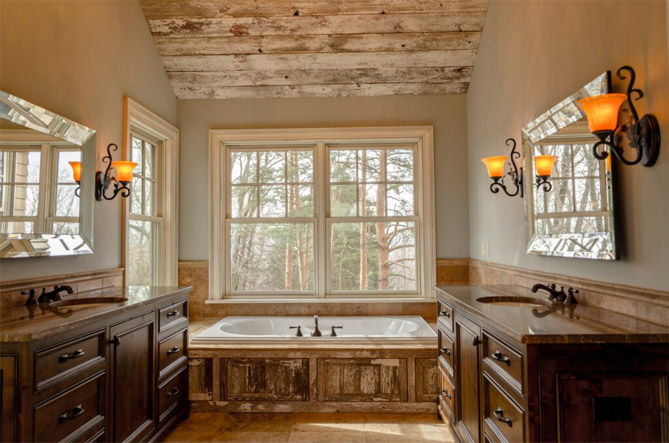Upgrading your windows can breathe new life into your home. Not only can new windows refresh a home’s appearance, but they also improve energy efficiency, reduce noise, and enhance overall comfort. Yet one sticking point for many homeowners is cost. How much should you budget for high-quality, long-lasting windows? The short answer: it varies. From window type to materials, labor costs, and energy-efficiency features, numerous factors play a role in final pricing. That’s why having a clear grasp of what influences the cost is invaluable when planning a window-refresh project.
In this guide, we’ll dive into the major cost variables, offer ballpark figures, highlight when to consider professional help, and discuss strategies to find a balance between upfront price and long-term value. Whether you’re looking at a few windows or a full-house replacement, this overview will help you make informed decisions while avoiding common pitfalls.
Why Window Costs Vary
Windows aren’t all made the same. Factors like material quality, brand reputation, and added features (like multiple panes or Low-E coatings) can lead to drastically different price tags. Additionally, labor costs can swing based on your home’s layout or local market rates. Understanding these basics will help you spot realistic estimates and ask the right questions.
Window Type
- Single-Hung vs. Double-Hung: Single-hung windows typically cost less but only have a movable lower sash. Double-hung windows have two movable sashes, allowing easier cleaning and enhanced ventilation—which usually commands a slightly higher price.
- Casement vs. Sliding: Casement windows (which open outward using a crank) often seal tightly, making them energy efficient. Sliding windows can cost less but sometimes require more maintenance to keep the track free of debris.
Material Choices
- Vinyl: Commonly the most budget-friendly option, vinyl is known for its decent insulation and low maintenance. However, low-grade vinyl can warp or discolor, so aim for mid-range or premium vinyl to ensure durability.
- Wood: Coveted for its timeless appearance, wood can be costly. It also needs more upkeep, like periodic repainting or sealing.
- Fiberglass: More expensive than vinyl yet recognized for excellent durability and thermal performance. Fiberglass expands and contracts less than other materials, making it well-suited for extreme climates.
- Aluminum: Lightweight and generally cheaper, but less thermally efficient. Best for mild climates or commercial-style designs.
- Composite: A blend of materials (often sawdust and polymer resins), offering the look of wood with reduced maintenance requirements. Though frequently priced near wood, it usually has better moisture resistance.
Glass and Energy Efficiency
- Single, Double, or Triple Pane: More panes mean better insulation, but also a higher cost. Double-pane windows largely hit the sweet spot for many homeowners, though triple-pane is popular in very cold or noise-conscious settings.
- Low-E Coatings: Thin metallic coatings can help reflect heat back inside (in cooler regions) or block it out (in warmer ones). Low-E windows often cost more upfront, but they pay dividends on utility bills over time.
- Gas Fills: Argon or krypton gas is sometimes injected between panes for added insulation. This boosts the price but improves comfort in harsh climates.
Average Cost Ranges
Window replacements can run anywhere from a few hundred dollars to well above a thousand dollars per window. Below are some ballpark figures (in USD) for the most common scenarios:
- Basic Vinyl Single-Hung: $200–$450 per window (materials only).
- Mid-Range Vinyl Double-Hung: $300–$600 per window (materials), with reputable brands and standard double-pane insulation.
- High-End Wood or Fiberglass: $600–$1,200 per window or more, especially for larger custom sizes and premium finishes.
- Additional Energy-Efficient Upgrades: $50–$100+ per window, depending on Low-E coatings, gas fills, or specialized framing materials.
These figures don’t account for labor or extra services like removing and disposing of old windows. Labor can add another $100–$300 per window, depending on the complexity of the job and local labor rates. Homes with unique shapes, older or delicate frames, or second-story installations often see higher labor charges.
Labor and Installation Factors
Labor costs are an important piece of the puzzle: even the best windows can underperform if installed incorrectly. A seasoned professional will ensure correct alignment, insulation, and sealing, maximizing energy performance—and likely saving money on future repairs. Here’s how labor fees can fluctuate:
Complexity of the Job
- Retrofit vs. New Construction: Retrofitting new windows into existing frames is typically cheaper than new-construction installations, which may involve reframing or building out an opening.
- Structural Adjustments: Enlarging a window opening or installing a larger bay or bow window can necessitate structural changes, adding significantly to labor expenses.
- Ease of Access: Second-floor or high-rise installations often incur added fees for scaffolding or specialized safety equipment. Likewise, obstacles like shrubs or limited yard space can slow down the process.
Regional Differences
- Location and Cost of Living: Labor rates in large urban centers might be higher than rates in smaller towns or rural areas.
- Contractor Experience: Highly rated pros may charge more, but that often comes with peace of mind and proven expertise.
- Seasonal Demand: Scheduling a window replacement off-season (often late fall or winter, depending on climate) can sometimes result in discounts.
Extras and Upgrades
- Removal of Old Materials: Disposing of your existing windows is often included but might appear as a separate line-item.
- Trim, Sill, and Frame Repairs: If rot, mold, or water damage is discovered, you’ll pay extra to fix it before installing the new window.
- Caulking, Sealing, and Insulation: Some quotes factor in top-of-the-line caulks or expanding foam insulation. Ask about these details to ensure a long-lasting seal.
Balancing Quality and Cost
It’s natural to look for ways to save money on your project. But skimping on quality can lead to drafts, leaks, and frustrations that end up costing more in the long run.
The Value of Mid-Range Products
Opting for a reasonably priced, mid-tier product is often the sweet spot:
- Better Durability: These windows typically stand up to wear-and-tear better than rock-bottom alternatives.
- Improved Warranty: Mid-range or premium windows often have more comprehensive coverage. A long warranty can protect you from unforeseen defects or issues.
- Energy Efficiency: Even if you skip triple-pane glass, a good double-pane with Low-E can bring measurable energy savings.
Evaluating Warranties
Window warranties vary widely. Some general points to check:
- Coverage Length: Many companies offer 10-, 15-, or even lifetime warranties covering frames, glass seals, and hardware.
- Transferability: If you sell the home, does the warranty transfer to the new owner? This feature could be a selling point.
- Restrictions and “Gotchas”: Some warranties limit coverage if you fail to register within a certain timeframe or if installation wasn’t done by a factory-approved installer.
Future Maintenance and Repairs
No matter how good the windows, some upkeep remains essential—replacing weatherstripping, checking caulk lines, or occasionally lubricating tracks. Plan a modest maintenance budget each year. For wood frames, this budget might be larger to accommodate painting or staining. Vinyl and fiberglass frames typically need less hands-on care but still deserve periodic checks to ensure drainage holes aren’t clogged and hardware stays functional.
Energy Savings and Rebates
Windows can have a noticeable impact on monthly utility bills, especially if you’re dealing with older single-pane windows or frames that no longer seal properly. Energy-efficient models might cost more, but they pay back over time in reduced heating and cooling expenses.
Potential Savings
- Lower Utility Bills: The U.S. Department of Energy notes that upgrading from single-pane to ENERGY STAR®-rated windows can reduce household energy bills by an average of 12% nationwide. Variables like climate and window orientation make this a rough estimate, but the improvement is often significant in places with hot summers or cold winters.
- Improved Comfort: Beyond savings, well-insulated windows reduce drafts and temperature swings, creating a more stable indoor climate.
Incentives and Rebates
- Federal Tax Credits: Depending on legislation, there may be periodic tax credits for installing energy-efficient windows. Check current guidelines, as these programs can expire or renew over time.
- Local Utility Rebates: Some utilities reward homeowners who upgrade to certified energy-efficient windows. Inquire with your local provider or search their website.
- State or City Programs: A variety of states and municipalities encourage homeowners to invest in energy-saving improvements—some may include discounted loan programs or property tax incentives.
Even in areas without official incentives, keep in mind that high-caliber energy-efficient windows can translate into real-dollar savings each month, offsetting higher purchase prices over their lifetime.
Custom Windows and Special Features
While standard window sizes and types work for many homes, some homeowners opt for personalized designs that cater to specific tastes or architectural styles. These customizations tend to push your costs up.
Specialty Shapes and Custom Sizing
- Arched or Round Windows: If your home’s design calls for unique shapes, expect higher manufacturing expenses.
- Large Picture Windows: Appreciated for unobstructed views, these windows can be expensive, especially if you add insulated frames and advanced glass features.
- Historic or Period Authenticity: Restorations of older homes might require matching unique frames or materials, which may require handcrafted touches.
Decorative Glass Options
- Frosted or Textured Glass: Common for bathrooms or front doors, these add privacy but increase material costs.
- Stained or Leaded Glass: Beautiful and highly custom, but also significantly more expensive due to specialized craftsmanship.
- Internal Grilles or External Muntins: Divided-light or grid patterns can change the window’s look, though many of today’s designs place the grilles between panes to simplify cleaning.
Security and Noise Reduction
- Impact-Resistant Glass: Required in hurricane-prone regions (or for a safety upgrade), these windows resist storm debris and forced entry attempts, raising costs.
- Laminated Glass: For added soundproofing or protection from UV rays, laminated glass can block noise and help reduce fading of fabrics.
- Hardware Upgrades: More robust locks or child-safety latches are optional extras that add modest but notable costs.
Building a Realistic Budget
When planning a window replacement project, a thorough approach removes surprises and helps keep stress at bay.
Assess Number and Style of Windows
Start by recording the type, size, and condition of each window. If certain windows are in better shape, you could phase replacements over multiple years, focusing first on the worst-off. However, if you want uniform aesthetics or better bulk pricing, replacing them all simultaneously might be more cost-effective.
Factor in Installation Costs and Extras
Ask potential contractors these questions:
- What’s included in your quote? Does it cover disposal of old windows, minor frame repairs, finishing work, or new trim?
- Will you need structural modifications or special reinforcements?
- Are there any discounts for scheduling during an off-peak season?
Plan for Contingencies
It’s wise to have a 10%–20% buffer for unexpected issues. Homes can hide water damage or rot that only becomes apparent when old windows are removed. Budgeting some wiggle room ensures you’re ready for these curveballs rather than scrambling for extra funds mid-project.
DIY vs. Hiring a Pro
Installing windows yourself can be tempting, especially if you’re handy. But there are reasons most homeowners—particularly first-timers—prefer certified pros:
Pros of Hiring a Professional
- Expertise: Trained installers handle issues like uneven openings, patching exterior siding, or dealing with older frames. Properly sealed windows last longer and deliver better energy performance.
- Speed: A professional team can replace several windows in a single day or weekend, minimizing disruptions.
- Warranty Backing: Many manufacturers require professional installation to honor product warranties. If you self-install and something goes wrong, you may have limited coverage.
When DIY Makes Sense
- Replacing One or Two Simple Windows: If you have standard-size windows, accessible from ground level, and you’re confident you can measure accurately, a small-scale project might be feasible.
- Experience in Home Improvement: Skilled DIYers with carpentry and finishing experience might enjoy the challenge—while saving on labor.
- Time Flexibility: If you can work at your own pace, you might handle complex tasks like carefully insulating or addressing minor trim repairs.
Still, weigh the risks. Missteps in measurement or sealing can lead to chronic drafts, leaks, or expensive do-overs. If in doubt, consulting with a professional can be the more cost-effective route in the long run.
A Real-World Example
Consider a homeowner, Sandra, looking to replace 10 windows in a mid-sized suburban home. She primarily has single-hung vinyl windows over 20 years old. Here’s how she approached her budget:
- Initial Research
She identified that most of her issues stemmed from drafts and heard that double-hung windows would be more convenient for cleaning. - Quotes and Estimates
She obtained three quotes:- A local smaller contractor at about $5,500 total (basic vinyl replacements, standard double-pane, minimal upgrades).
- A well-known brand at $8,000 (enhanced warranty, Low-E glass, reputation for quality).
- A high-end boutique operation at $10,500 (wood-clad frames, designer hardware).
- Decision
Sandra chose the $8,000 option. It offered a solid warranty and efficient double-pane design, which seemed like a safe middle ground. - Outcome
The project finished on time. She noticed reduced drafts immediately and expects to save on heating bills. Two months in, she’s happy with the improved functionality and look of her new windows.
This scenario illustrates how homeowner goals—like balancing style, efficiency, and cost—determine the final route taken.
Tips for Comparing Quotes
Shopping around is crucial for picking the best windows for your budget. Here are some pointers:
- Request Detailed Line-Item Bids
- Ask contractors to separate material and labor costs, so you see exactly where your money is going.
- Inquire about brand, model, and any included coatings or gas fills.
- Check Credentials
- Look for references and online reviews.
- Validate any necessary state or local licenses, plus proof of insurance.
- If a contractor is “authorized” or “certified” by certain window manufacturers, it may mean better warranty coverage.
- Ask About Timelines
- Some companies can install windows within days; others may require weeks of lead time.
- Confirm how long the job will take and if you need to be home during installation.
- Decide What “Extras” You Truly Need
- Do you want upgraded hardware or custom grid patterns?
- Are advanced solar-control coatings a priority given your climate?
- Each add-on bumps up the cost.
Maximizing Long-Term Value
Yes, windows can be expensive. But they’re also a crucial part of your home’s comfort and efficiency. Aim for a decision that balances your immediate budget with potential long-term gains.
Future-Proofing
Windows tend to last 15 to 30 years, depending on material quality and local climate. It might be worth paying slightly more for advanced features (like Low-E coatings or composite frames) that help maintain a comfortable home and cut energy costs well into the future.
Maintenance Planning
Sticking with low-maintenance materials like vinyl, fiberglass, or composite can save time and money on upkeep. If you favor the beauty of wood, consider strategic placements—maybe high-traffic or moisture-prone areas get composites, while more sheltered areas showcase wood.
Energy-Saving Strategies
Pair new windows with other improvements for maximum impact, such as:
- Upgrading insulation in walls or attics.
- Installing proper weatherstripping on doors.
- Adding insulated curtains or blinds to manage solar gain.
That holistic approach amplifies the benefits of your new windows.
External Resources for Further Guidance
- Efficient Windows Collaborative – Comprehensive resource explaining how different window technologies can affect energy use and comfort.
- ENERGY STAR® Windows – Learn about the criteria for ENERGY STAR–certified windows, plus regional guidelines.
- Local Utility Websites or Rebates – Many local west, midwest, or east coast utility companies feature rebates or suggestions for window upgrades. Check your provider’s site to see if you qualify.
Final Thoughts
When it comes to window replacements, there’s no one-size-fits-all price tag. The cost can vary significantly based on window style, material, energy efficiency, and labor. Yet a well-planned replacement can enhance your home’s curb appeal, reduce energy bills, boost comfort, and potentially increase its resale value.
By understanding the factors that influence pricing and carefully comparing bids, you can replace your windows in a way that respects both your budget and long-term goals. Whether you opt for a straightforward vinyl swap or choose custom wood-clad showpieces, the best path forward is the one that meets your individual needs—balancing finances, aesthetics, and efficiency in a home you’ll enjoy for years to come. And if you ever feel uncertain about cost or installation specifics, consulting seasoned professionals and leveraging resources on energy-efficient design can guide you toward a confident, well-informed decision.




